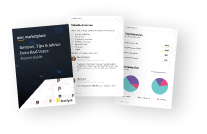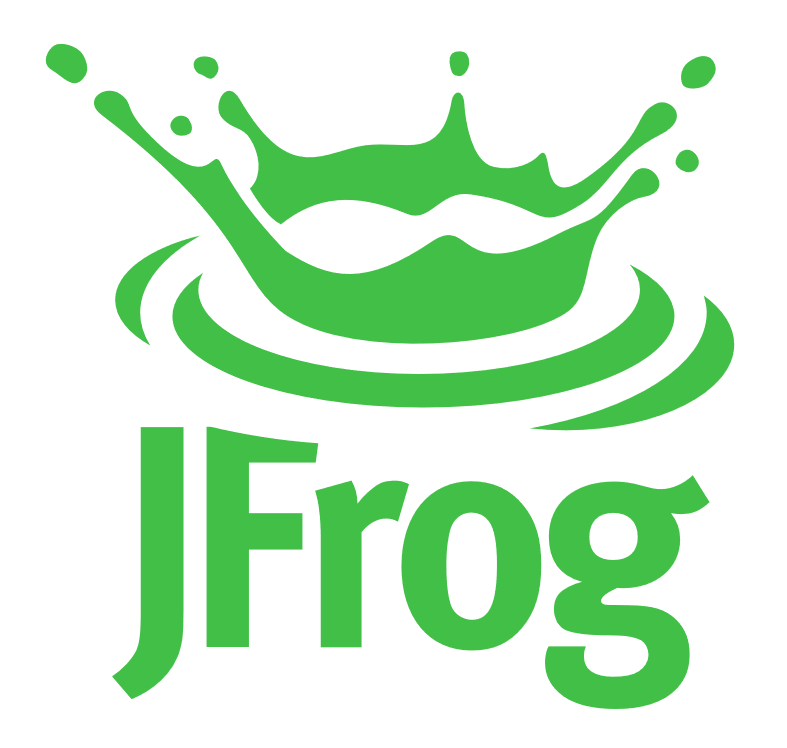
Overview

Product video
Accelerate your DevOps pipelines and enterprise artifact management. Sonatype Nexus Repository is the leading choice for a centralized, scalable, and secure solution at the heart of your DevOps pipelines. It supports your entire software supply chain, enabling efficient management of components, binaries, and build artifacts.
Key Features:
- Enterprise resiliency & replication: Improve your uptime with fast artifact availability, automatic failover, and component replication.
- Universal format support: Work with the tools you already use in formats like Java, npm, NuGet, Docker, PyPI and RubyGems.
- Advanced intelligence: Evaluate open source and third-party components for license types, security vulnerabilities, popularity, and age.
As the industry-leading software supply chain management platform, the Sonatype Platform is the choice of organizations that are currently using or evaluating solutions such as Mend, Jfrog, Snyk, or GitLab. Sonatype provides a comprehensive and integrated solution for all aspects of the software development lifecycle, from secure development to release automation, helping organizations reduce risk and accelerate their time to market.
Highlights
- Support up to 18 package formats in a single deployment.
- "If we want to know what production looks like, we should be able to look at our repository and know - from an infrastructure stack, from a library stack, from an application stack - exactly what is being deployed in production at any given time." - Bryson Koehler, EVP & CTO, Equifax.
Details
Introducing multi-product solutions
You can now purchase comprehensive solutions tailored to use cases and industries.
Features and programs
Buyer guide

Financing for AWS Marketplace purchases
Pricing
Dimension | Cost/12 months |
|---|---|
Maximum 18.0M requests per month, 300,000 total components | $11,500.00 |
Maximum 18.0M requests per month, 300,000 total components | $11,500.00 |
Vendor refund policy
We do not offer a refund policy.
Custom pricing options
How can we make this page better?
Legal
Vendor terms and conditions
Content disclaimer
Delivery details
Software as a Service (SaaS)
SaaS delivers cloud-based software applications directly to customers over the internet. You can access these applications through a subscription model. You will pay recurring monthly usage fees through your AWS bill, while AWS handles deployment and infrastructure management, ensuring scalability, reliability, and seamless integration with other AWS services.
Resources
Vendor resources
Support
Vendor support
Please contact your assigned Sonatype customer support representative for support.
AWS infrastructure support
AWS Support is a one-on-one, fast-response support channel that is staffed 24x7x365 with experienced and technical support engineers. The service helps customers of all sizes and technical abilities to successfully utilize the products and features provided by Amazon Web Services.


Standard contract
Customer reviews
Stores artifacts reliably with secure access and detailed file auditing
What is our primary use case?
I'm using the Sonatype Nexus Repository to store the artifact files, specifically the build files from my company. The project builds into many binary files and images, so I store all of that on Sonatype Nexus Repository. We have retention days for all artifacts. Whenever the server needs to get the binary file, it requests it from the Sonatype Nexus Repository and takes the correct file for deployment. Instead of ECR, AWS has something called ECR and some other services to store binary files, but the Sonatype Nexus Repository open-source is sufficient without any cost.
The Sonatype Nexus Repository is running on AWS Cloud, on EKS as a service. The current functions fit our corporation, and we're presently using it free without the need for a license. However, we plan to buy a license in the future.
What is most valuable?
Hosting, proxying, and grouping repositories in Sonatype Nexus Repository have no impact on development process time and are perceived as very fast. It simplifies version management by storing a consistent library version, avoiding conflicts.
User policies and granular access control, though not integrated with LDAP or Azure Entra, work well for specific action configurations.
What needs improvement?
We installed the Sonatype Nexus Repository using an open-source Helm chart but need to test it for credential-less AWS integration. We may seek support in the future.
One of the challenging aspects of the Sonatype Nexus Repository is understanding its procedures, as job scheduling is not fully explained in documentation and logs are cumbersome and unhelpful for issues such as troubleshooting push file errors.
For how long have I used the solution?
What was my experience with deployment of the solution?
What do I think about the stability of the solution?
What do I think about the scalability of the solution?
Which solution did I use previously and why did I switch?
How was the initial setup?
Which other solutions did I evaluate?
What other advice do I have?
Our team pushes libraries to the Sonatype Nexus Repository to store them with fixed versions. Before using Sonatype Nexus Repository, we pulled from external sources, which sometimes caused issues with library versions changing and breaking code.
One of the notable features of Sonatype Nexus Repository is the detailed file information provided for stored files, including SHA and checksums.
I rate the Sonatype Nexus Repository 9.5 out of 10.
Which deployment model are you using for this solution?
If public cloud, private cloud, or hybrid cloud, which cloud provider do you use?
Easy to use repository for sharing artifacts within team
Perfect solution for artifact management
A stable solution that provides a central platform for storing build artifacts, saving us significant maintenance and hardware costs.
What is our primary use case?
Our primary tool is Sonatype Nexus Repository Manager. We use it for NPM, Maven, and Docker repositories. Additionally, we utilize Nexus Firewall for repository governance. Looking ahead, I'm considering implementing Nexus Repository Manager 3 as an alternative. This would help us manage packages from Nexus IQ Server and support various package formats such as NPM, Maven, and Docker.
We rely on Sonatype Nexus Repository Manager as our main tool, employing it for NPM, Maven, and Docker repositories. In addition, Nexus Firewall plays a crucial role in our repository governance. As we plan for the future, I'm exploring the option of incorporating Nexus Repository Manager 3. This move would enhance our ability to manage packages from Nexus IQ Server and cater to different package formats like NPM, Maven, and Docker.
What is most valuable?
Primarily, the extensive support for a wide range of packages is a crucial factor. The effectiveness of new-age package managers is often determined by the breadth of packages they can handle. In this regard, Nexus Repository Manager 3 stands out for its comprehensive coverage, accommodating a vast array of packages widely utilized across the globe. This inclusivity enables easy access to a diverse range of packages, making it a pivotal aspect of its functionality.
What needs improvement?
Particularly concerning OSF-type licenses, while they support a multitude of features, there's room for improvement in the single point transform, especially for grouping. It appears that currently, the grouping functionality is not robust, particularly for Docker images within a group. The support for this aspect seems to be contingent on the license type. For instance, with the Voss license type, there is a noticeable absence of support for this feature. This is an area that could benefit from enhancement in the upcoming updates.
For how long have I used the solution?
I have been using Sonatype Nexus Repository for five months.
What do I think about the stability of the solution?
I am, personally, quite satisfied with the stability and would rate it 8 out of 10.
What do I think about the scalability of the solution?
I would rate the scalability of this solution a four out of ten. The reason being, it's not very scalable, and significant efforts are required to enhance scalability. There are noticeable limitations that need to be addressed for smoother scalability.Currently, there are approximately forty-eight users working with Nexus Repository in our company. As for future plans, I don't foresee a significant increase in the usage of Nexus Repository.
How are customer service and support?
While it's true that there is no explicit support for various license types, the summer type seems to be highly favored and encouraged among users. It holds a prominent position, perhaps earning a rating of seven for its effectiveness and user adoption.
How would you rate customer service and support?
Neutral
How was the initial setup?
It is easy and I would rate it 8 out of 10.The entire deployment process, including installation, manual testing, and all implementation phases, typically takes around one week but only one person is usually sufficient to handle the entire deployment efficiently.
What other advice do I have?
I can confidently recommend this solution. The main reason is its stability. In comparison to other competitors, especially when I consider alternatives like Project X, Nexus stands out as a stable and reliable choice. This reliability is a key factor that makes me feel comfortable recommending it to other users. Based on its performance, I would rate it 8 out of 10.
Easy-to-scale product with a valuable scanning feature
What is our primary use case?
We use Sonatype Nexus Repository as a proxy for external packages for internet users. It also helps us manage internal packages and works as a repository for container images.
How has it helped my organization?
The product helped our organization improve runtime efficiency. We do not have to connect third-party vendors while building external packages or storing container-approved images. It allows end-to-end life cycle accessibility.
What is most valuable?
Sonatype Nexus Repository has a valuable internal scanner feature. It automatically scans external artifacts, such as Fortify SAST, before storing them in the repository.
What needs improvement?
There could be more add-on features for the product. They should provide automation for adding container images and artifacts in compliance with security requirements.
For how long have I used the solution?
We have been using Sonatype Nexus Repository for one year.
What do I think about the stability of the solution?
I rate the product's stability a seven out of ten. Sometimes, there are challenges in mitigating intermittent incidents. There might be factors such as network issues impacting communication.
What do I think about the scalability of the solution?
We have 20,000 to 40,000 end users for the product. It is easy to scale. I rate its scalability an eight out of ten. We use it 24/7.
How are customer service and support?
The technical support team takes time to respond and depends on the nature of the request. We have to keep contacting them. However, the process to create tickets is simple.
How would you rate customer service and support?
Neutral
Which solution did I use previously and why did I switch?
I have worked on POCs for different products.
How was the initial setup?
The initial setup is simple if you have access to container images. It is a seamless process for upgrading as well. Everything is well documented on the vendor’s official site. They form regular maintenance to comply with organizational requirements. They have a good maintenance process for updating and addressing issues. We have a team of 100 executives working on the current project to maintain components.
What's my experience with pricing, setup cost, and licensing?
I use the open-source version of the product, which is free of cost.
What other advice do I have?
I rate Sonatype Nexus Repository an eight out of ten. I advise others to update the business continuity plan for components regularly, i.e., semi-annually or quarterly. Use container images for the next migration or maintenance update. They should secure the user interface. Additionally, they should ensure a good storage process and plan a retention policy for all attacks.
